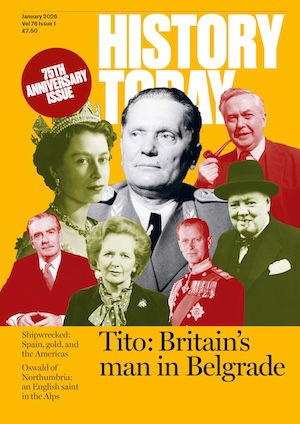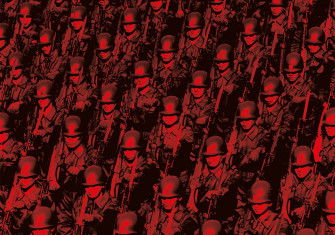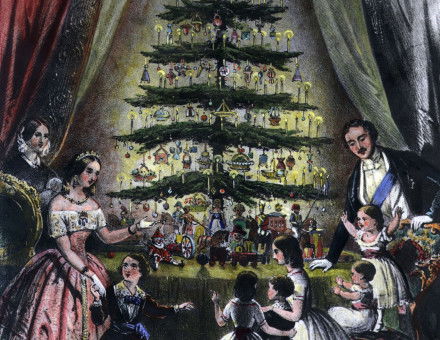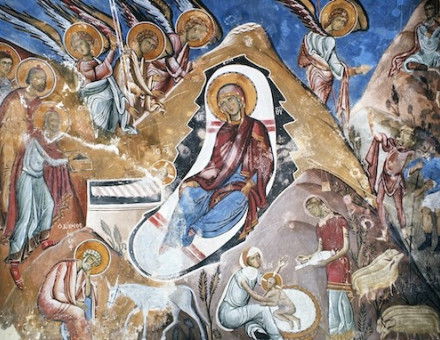After Hiroshima: The US Occupation of Japan
Following Japan’s unconditional surrender in September 1945, the US aimed to rebuild the nation in its own image – with mixed results.
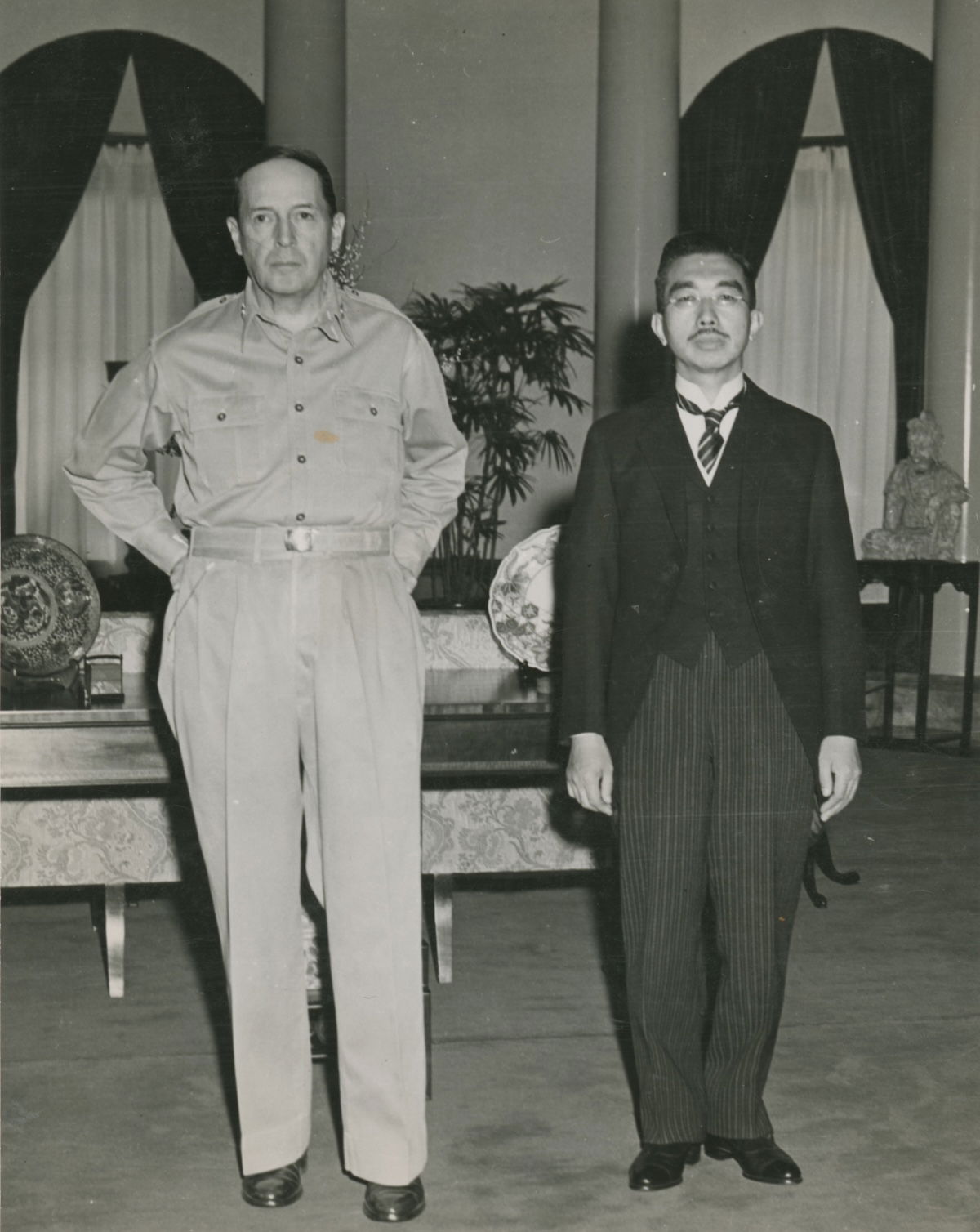
The most famous image of the Allied Occupation of Japan, which ran from August 1945 to April 1952, shows General Douglas MacArthur looming over a diminutive Emperor Hirohito. The Japanese government at the time regarded the photo as a fiasco. In the past, only Imperial Household photographers had been allowed anywhere near the emperor with a camera, and even they had to stay at least 20 metres back and use telephoto lenses. Hirohito had a slight stoop, which meant that only his upper body was permitted to be photographed. Shots from sideways on were forbidden. Not only is MacArthur far more physically imposing in the photograph, but the emperor’s suit appears not to fit him very well; as a manifest kami (god), the emperor could not be touched by his tailor.
The Japanese government quickly tried to ban the media from publishing the photograph. But the Occupation authorities overturned the ban, knowing full well the message that it would send: the Allies, and more specifically the Americans, were in charge now – with MacArthur leading proceedings, as Supreme Commander for the Allied Powers (SCAP). Held in awe both by Japan’s leaders and by many within the Occupation itself – who joked that he could be found, early in the morning, walking on the water around the Imperial Palace in Tokyo – MacArthur acquired the nickname ‘the Blue-Eyed Shogun’.
That nickname, combined with the infamous photograph, captures the Occupation’s momentous place in Japanese history. As Hirohito would have known all too well, his family had not held real authority in Japan for the best part of a thousand years. Military men had ruled in their stead: shoguns, warlords, and, most recently, senior figures in the Imperial Japanese Army. There had been only a relatively brief interlude, in the late 19th and early 20th centuries, when Japan was run by civilian politicians. And here they now were again: a military man intent on using the emperor as his puppet.
There was a great irony to this. MacArthur and the Occupation authorities relied on traditional forms of wielding power in Japan even while their seven-year mission was premised on overturning them. Planning for an occupation had begun shortly after Japan’s attack on Pearl Harbor in December 1941. Those involved developed a very particular understanding of Japan’s recent history. After the American commodore Matthew C. Perry had helped to force Japan’s opening to the modern West in the 1850s, the Japanese had embraced all that it had to offer: new weapons technologies, banking and postal systems, schools and medicine, industry and commerce, and even a Prussian-inspired form of constitutional democracy. Yet something deeper in the Japanese psyche had remained unchanged. There lingered, American analysts suspected, a feudal mindset: relatively unquestioning of authority, insufficiently individualist, unconvinced of the virtues of democracy and of liberal civil society. Occupation reforms would need to target that mindset.

Allied intentions towards Japan during a period of occupation had been laid out in the Potsdam Declaration of 26 July 1945, which demanded ‘unconditional surrender’ on pain of ‘prompt and utter destruction’. Following a fortnight and more of disastrous dithering, during which Hiroshima and Nagasaki became the first casualties of the atomic age and the Soviet Union joined the war against Japan, the emperor decided that the Potsdam terms must be accepted. Both the Japanese and Allied sides regarded surrender, when it came, in the grandest historical terms. In his radio speech announcing the end of the war, Hirohito spoke about the ‘new and most cruel bomb’ developed by the United States and claimed that Japan’s surrender was necessary to avoid the ‘total extinction of human civilisation’. The Americans, for their part, chose to fly two very special flags aboard the USS Missouri in Tokyo Bay when the instrument of surrender was signed. One had been flying over the White House the day that Pearl Harbor was attacked. The other had been flown by Commodore Perry when he arrived off Japanese shores nearly a century before.
The three D’s
Remaking Japan required the accomplishment, most urgently, of three D’s. First, Japan had to be demilitarised: its armed forces were disbanded and its war-making industries were either shut down or repurposed. Some former members of the Imperial Japanese Army, including Arisue Seizō, the former chief of army intelligence, maintained buried stockpiles of money and weapons in case a chance arose – one day – to take back Japan. But in general, the Occupation was so peaceful that many of the Allied soldiers sent to secure it were quickly sent elsewhere.
Second on the list was decentralisation of economic power. Japan’s rapid industrial and military build-up in the first decades of the 20th century owed much to close relationships, sometimes extending to intermarriage between families, forged by big zaibatsu conglomerates with politicians, civil servants, and the military. The ‘Big Four’ alone – Mitsui, Mitsubishi, Sumitomo, and Yasuda – at one point controlled a third of Japanese heavy industry and half of the country’s finance and insurance. As a ditty posted to a bulletin board in Tokyo by an American officer put it:
There’s something rather fishy
About the Mitsubishi
And the rest of the zaibatsu
Are also not so hot-su.
Those cosy old arrangements had to go, much though the zaibatsu themselves resisted it. They wined and dined American officials, persuaded those officials’ maids to spy on them, and even sent flowers to the economist Eleanor Hadley, on whose research Occupation policy drew. It was all to no avail – at least, at first.
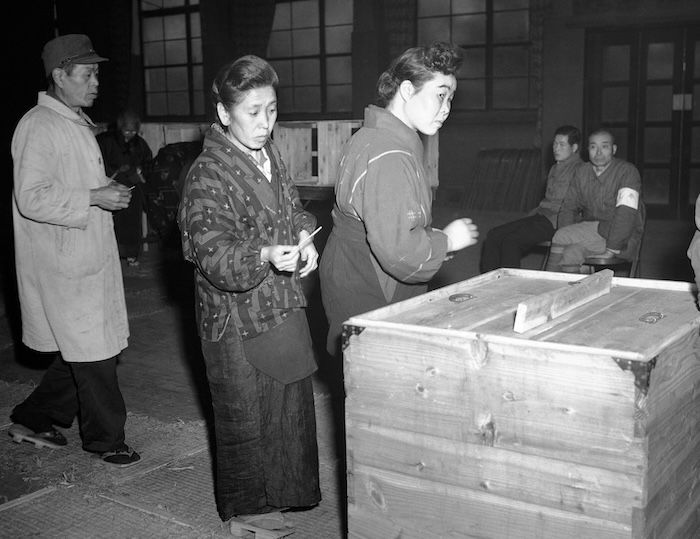
Last but not least came democratisation. The electoral franchise was widened to encompass women, something for which Japanese feminists had campaigned without success in prewar Japan. Henceforth Japan would be run by elected politicians, with the largest party in the lower house of a new bicameral parliament selecting the prime minister. Executive authority would rest with the Cabinet, and the judiciary would be fully independent. Local government would also gain new powers, to counterbalance parliament and the government ministries in Tokyo.
This was a radical departure from the previous system. A simple diagram showing how Japan’s old constitution worked would have featured arrows pointing from everyone – politicians, civil servants, army, navy, courts, and prime minister – up towards the emperor. What that had meant in reality was not that Hirohito functioned as an autocrat – a role he sought to avoid – but instead that Japan’s institutions ended up vying for power in a chaotic and often debilitating way, with little responsibility towards one another since largely they answered directly only to the emperor.
The weaknesses of this system helped to get Japan into its disastrous wars, since there was no effective check on military adventurism, and also helped to frustrate its exit. Japan failed to accept the Potsdam terms in a timely way largely because there was no straightforward means for resolving differences of opinion among its civilian and military elites. Hirohito had been reluctant to intervene, preferring the role of constitutional monarch, and so a default consensus had emerged of ‘wait and see’ – even while, unbeknown to the Japanese, the ‘Little Boy’ atomic bomb was being assembled and the Enola Gay was flying test runs.
The Yokohama Strategy
Immediately after war’s end, attempts were made in the upper echelons of Japanese politics to thwart or at least temper Allied ambitions. You could call it the ‘Yokohama Strategy’. Back in the late 1850s Japan’s ruling Tokugawa shogunate had been forced to open up a number of treaty ports at which foreign merchants could ply their trades. Fearing an influx of interfering Westerners, the authorities established one of those ports at a small fishing village called Yokohama. They packed it with souvenir shops, restaurants, theatres, residential bungalows, and brothels, in the hope that if foreigners found all they needed in this one place they would be less likely to stray beyond it and cause trouble. The plan worked. Yokohama soon attracted what one English observer described as the ‘scum of Europe’: people given to spending their spare time fighting, carousing, and discharging firearms in the middle of the night. But having attracted them, Yokohama largely held them in place. The town, as it grew, served as a shock-absorber for the nation.
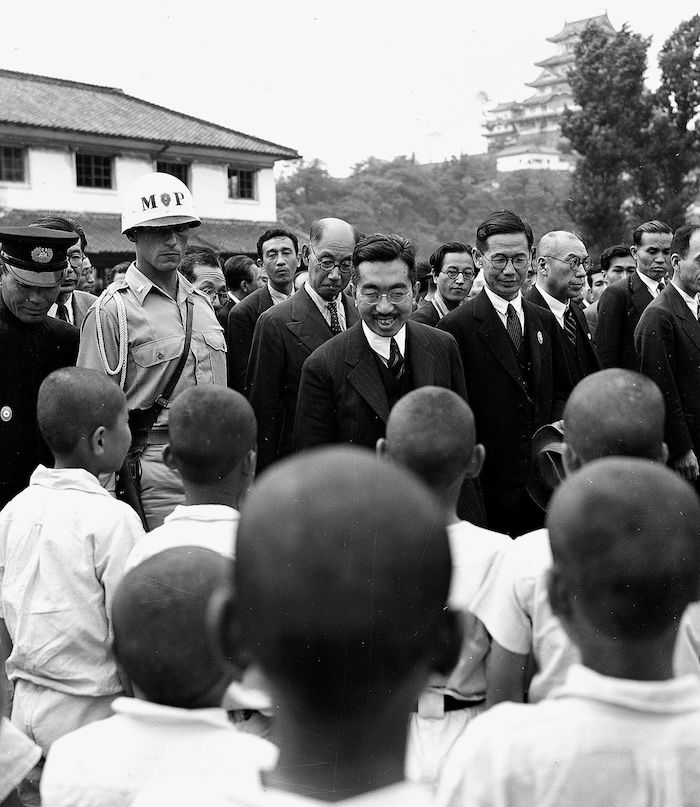
A version of this strategy was now being tried again. Before the Allies landed in Japan at the end of August 1945, moves were made to disband the country’s armed forces and resurrect left-leaning policies from the prewar era. The hope was that by rolling out a red carpet, the Japanese could angle it carefully in their desired direction of travel. In important ways, it worked. An argument among the Allies over what should happen to the emperor was won by those who insisted that the imperial institution be preserved – albeit downgraded to a ‘symbol’ of the nation rather than a semi-divine family in ultimate control of the country. The emperor’s relief can only be guessed at. Hirohito seems genuinely to have felt the burden of his ancestry, so the idea must have been awful to contemplate that the Japanese imperial line, stretching back to the 500s and possibly further, might come to an end on his watch.
Japan’s civil servants, too, survived the early Occupation reforms largely unscathed. Someone, after all, had to implement America’s grand designs. The people who knew how to get that done were the ones who, for decades by this point, had regarded themselves as ‘shepherds of the people’. It was their job to predict Japan’s social and economic trajectory – based largely on watching what happened to Western countries as they modernised and industrialised – and to formulate policies accordingly. This, combined with American faith in expertise, yielded what came to be known as the ‘Paradise Exam’. Senior civil servants were examined on their fitness for retaining office, but were permitted tea, cigarettes, and an unlimited amount of time in which to complete the paper. For the most part, the same old people remained at their desks, with some even trusted to screen candidates for MacArthur’s purges elsewhere – which extended to 200,000 people with links to the old regime: journalists, teachers, publishers, policemen, and military officers.
Victors’ justice
It would be misleading to claim all this as a straightforward victory for the Yokohama Strategy. The American plan for Japan always involved blaming a relatively small number of people for Japanese militarism and war-making, and leaving everyone else free to participate in the planned reforms. So it was that in April 1946 a handful of senior figures from the wartime Japanese establishment found themselves in the dock in Tokyo, in Japan’s answer to the Nuremberg Trials. Eleven judges drawn from the Allied nations heard testimony about the plans and schemes, going as far back as 1928, which had led Japan to war. 1928 was a somewhat arbitrary date, and some at the trials contested it. The military ideologue Ishiwara Kanji, called as a witness, suggested that Commodore Perry’s fateful exercise in gunboat diplomacy back in the mid-1850s would be a fairer place to start. Former prime minister Tōjō Hideki, on trial for his life, argued for the Opium Wars of the mid-19th century on the basis that British imperialism had been decisive in shaping the region.
Emperor Hirohito was not the only one to be spared the ignominy and risk of a trial. The Tokyo Trials, as they became known, did not inquire into the activities of the Imperial Japanese Army’s infamous Unit 731, a biological warfare unit based in Manchuria whose gristly research had included human vivisection. Instead, its senior personnel were offered immunity in exchange for what the US regarded as valuable scientific data. Allied conduct during the war was also placed beyond the purview of the tribunal, including the dropping of atomic bombs on Hiroshima and Nagasaki. The tribunal’s later reputation, around the world but crucially in Asia, where most of the suffering caused by Japanese militarism had taken place, was harmed substantially by such choices. The charge of ‘victors’ justice’ was repeatedly made.

Then there were the vicissitudes of the courtroom itself, which saw the chief prosecutor Joseph Keenan fail to deal convincingly with Tōjō Hideki. Keenan took over at the last minute from a better-prepared junior, with embarrassing results. Tōjō managed to cast much of Keenan’s evidence into doubt and to make the claim – made in the run-up to the war and then repeated down the postwar decades by ultranationalists in Japan – that his country had acted in self-defence against encircling enemies. Tōjō was the one living under threat of the noose, but, as a woman working in the British embassy put it: ‘Tōjō had a good morning hanging Keenan.’
For all these shortcomings, the early years of the Occupation appear to have been popular with the Japanese public. Opinion polls suggested a large majority in favour of the new democratic arrangements, enshrined in a fresh constitution: the first in history to be authored for one country by another. Some of Japan’s Communists, newly released from prison and campaigning for elected office, wanted to see the emperor and empress executed. But most Japanese were content with the idea of the imperial institution fulfilling a symbolic function. They flocked to meet Hirohito on his regular tours of the country. The famous ‘pacifist clause’ in the constitution was popular too: a population all too aware, now, of having been lied to and led to disaster by militarists was in no hurry to see their country re-arm. Even plans for a Japanese FBI had to be shelved, so wary were people of a return to the internal surveillance and repression conducted by the prewar and wartime Special Higher Police and Kempeitai.
Reverse Course
Critics of the Occupation could be found both among Japanese conservatives and American businessmen and taxpayers. The former worried that the US was following up its military victory in 1945 with a culture war. New rules on divorce and property rights threatened the old-style Japanese household, rooted in an all-powerful father figure. Occupation-approved school textbooks seemed to educate children into feeling guilty about their country’s misdeeds while offering little by way of patriotic content. And from rockabilly and TV gameshows to the censoring of Japanese entertainment, American popular culture appeared set to dominate Japan’s mass media.
In the US, meanwhile, questions were being asked about what America was getting in return for around $600 million spent during the first two years of the Occupation on personnel costs alone. Japan did not look like much of an investment opportunity for American capital: its economic recovery was slow, trade unions were signing up new members at a rapid rate, and there was an unnerving breadth of popular support for socialism and communism. At a special ‘food May Day’, held in 1946 on a plaza right in front of the Imperial Palace, the communist leader Tokuda Kyūichi addressed a crowd of 200,000 people. ‘We are starving!’ he shouted, before turning around to point out Emperor Hirohito’s grand, secluded home: ‘Is he?’
Tokuda had spent much of the war in prison, alongside his fellow communist Shiga Yoshio, who claimed to have communicated the entire text of the Soviet Constitution to someone in a nearby cell by means of Morse code. With romantic stories like these to tell, combined with their freedom from the taint of association with the wartime regime, Tokuda and his allies thought their time had come. In fact, it was just a brief moment in the sun – and it was already coming to an end. Communism was on the rise across Eastern Europe, and in October 1949 a long-dreaded Communist Revolution took place in China. These developments helped to inspire what came to be called the ‘Reverse Course’: a conservative shift in the Occupation, which proved to be every bit as decisive as what had gone before in remaking Japan.
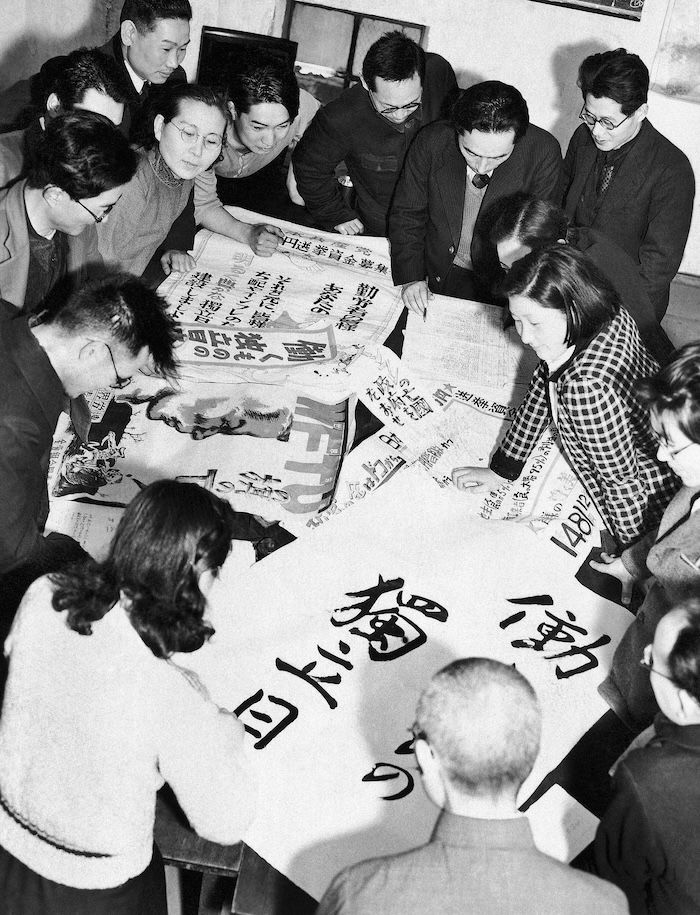
Between 1949 and 1952 Occupation purges focused on leftist influences in Japanese life. Plans to break up the zaibatsu were watered down and, hoping to shore up Japan as a regional ally, the US encouraged the creation of a National Police Reserve. Formed in response to the outbreak of the Korean War in 1950, which required the transfer to the Korean peninsula of large numbers of US personnel stationed in Japan, the NPR was billed as a domestic security force. But it was always intended to be the nucleus of a future Japanese army, and in time it morphed into the Self-Defence Forces. The name is still in use today.
Nowhere was this new plan for Japan more clearly reflected than in the two treaties that the US and Japan signed in 1951, bringing the Occupation to an end. The San Francisco Peace Treaty, between Japan and its former enemies, formalised the cessation of hostilities and the relinquishing of territory captured by the Japanese while at the same time laying out a modest scheme of reparations. The Soviet Union refused to sign it, largely because it objected to the second treaty, signed at the same time. This was the US-Japan Security Treaty, which – to its critics, at least – effectively turned the Japanese archipelago into an enormous US aircraft carrier. The United States was permitted to retain military bases on Japanese soil, including tens of thousands of soldiers. It maintained an especially heavy presence in Okinawa, which remained in American hands even when the Occupation ended the next year, in 1952.
The benefit to Japan of these arrangements involved a simple trade-off. In exchange for effectively outsourcing its foreign policy to the United States, Japan’s security was guaranteed (at minimal cost), its economy was boosted by favourable dollar-yen exchange rates, and the US vouched for it in a still-hostile international community. With US help, Japan joined the International Monetary Fund and World Bank in 1952, and the United Nations in 1956.
Some downsides
The most obvious positive legacy of this arrangement, over the decades that followed, was that Japan remained at peace while its economy grew rapidly and its population went from suffering starvation and disease to enjoying lifestyles that were the envy of most other countries – from high-tech comforts to average life-spans topping 80 years.
The first of many downsides has been that Japan did much less than it might have done to mend relationships with its Asian neighbours. Not all the blame here can fairly be placed on Japan and the US: such was the depth of hostility towards Japan in places such as South Korea that only the passage of time could help yield something like normal relations. Still, the US explicitly forbade the Japanese from forging relationships with Communist China until the US itself changed its stance in the early 1970s, under Richard Nixon. Combined with a tendency among broad swathes of people in Japan to prefer Western culture and friendships over Asian ones, alongside a powerful reticence about discussing the war, the effect of this was to create the impression that Japan failed to match West Germany’s agonising but necessary period of post-Nazi reflection and apology.
A second unwanted legacy of the Occupation was expressed by Donald Trump during his first election campaign in 2016. While out on the campaign trail in Iowa, he told a rally:
You know, we have a treaty with Japan where if Japan is attacked, we have to use the full force and might of the United States. If we’re attacked, Japan doesn’t have to do anything. They can sit home and watch Sony television. What kind of deals are these?
Despite the fact that Japan’s pacifist constitution was authored by the US and that the Japanese footed much of the bill for stationing American troops on their soil, a common view in the US during the 1980s and 1990s in particular was that Japan took a great deal from the US while punishing them on trade. This was brought home to New Yorkers in 1989, when Sony bought Columbia Pictures and Mitsubishi purchased a controlling stake in the Rockefeller Group. A few years later, during the first Gulf War, Japan contributed a hefty amount to proceedings – some $13 billion – only for some US critics to complain that ‘they pay in yen [while] we pay in blood’.
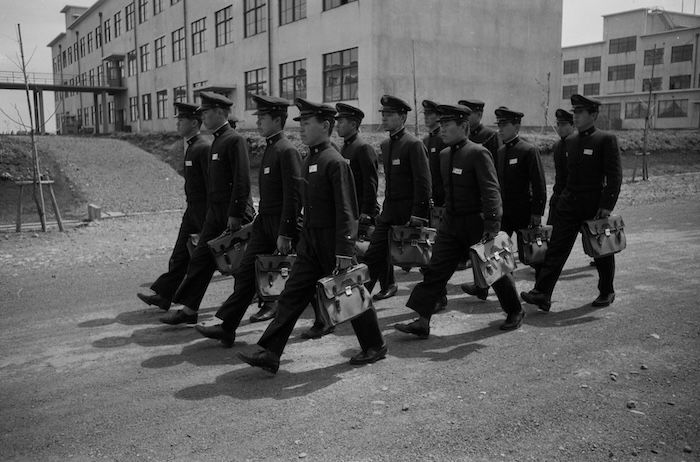
A third and final unhappy legacy of the Occupation is the state of Japan’s democracy. Intent on shoring up Japan as a reliably conservative ally, the United States – making use, it has been claimed, of the CIA – helped to fund and arrange the creation in 1955 of the Liberal Democratic Party (LDP). This coalition of conservative forces has rarely been out of power in Japan since, undermining the very democracy that the early Occupation sought to build. Until the late 1980s the LDP could at least claim to have forged the kinds of relationships with business, farmers, and banks that helped Japan prosper. But Japan struggled thereafter, with its ‘lost decades’ of economic growth. Public support for national politics has suffered ever since – though the Japanese are hardly unique in being unimpressed with their elected representatives.
Eighty years on, we can look back and agree that, given the depth of hostility and suffering that characterised the closing months of the Second World War in the Asia-Pacific, the Allied Occupation of Japan could have gone very much worse. Violent resistance was feared. At best, a lack of cooperation was expected. Instead, the energies and aspirations of ordinary people were successfully unleashed, from brand-new businesses like Sony – which started out under the Occupation trying to sell 35kg tape recorders from the back of a truck – to millions of tenant-farmers who gained the chance to buy the land they tilled.
The unwanted legacies of the Occupation have yet to be completely overcome, but Japanese democracy now benefits from the emergence of new national parties, strong local government, and citizen activists working for change in a range of areas of life. In foreign policy, Japan’s defence and security arrangements have been beefed up over the past decade, slowly easing the country’s reliance on America. It is meanwhile possible to imagine, perhaps in the era after Xi Jinping, that a more productive strategic relationship may be forged with China. Japan and China do a phenomenal amount of trade with one another: Japanese exports to China were worth $124 billion in 2024, while China’s to Japan amounted to some $152 billion. One may hope that the value placed by both populations on peace and prosperity will get through to their leaders, helping to ensure that wherever the US-Japan relationship goes from here, East Asia somehow makes it through another 80 years without major conflict between its two great powers.
Christopher Harding is Senior Lecturer in Asian History at the University of Edinburgh. His latest book is A Short History of Japan (Pelican, 2025).

